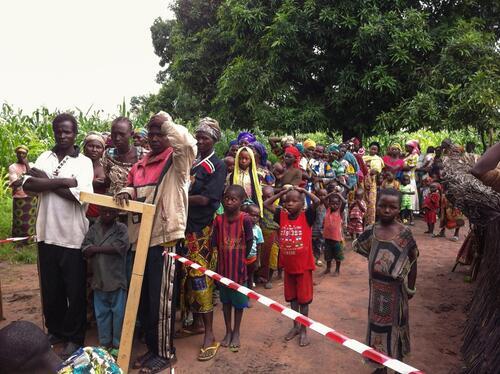What are the main considerations when employing this strategy?
Since July, MSF has been employing seasonal malaria chemoprevention (SMC) for the first time in two Sahelian countries. The initial results are encouraging. Dr Estrella Lasry, malaria specialist at MSF, reflects on the different aspects and future prospects of this strategy.
This is the first intervention of this type we've ever run, so we had to delve into a number of medical and operational issues and read up on studies covering the subject and the World Health Organization's (WHO) recommendation issued last March.
As a first step, we had to select which anti-malarial treatment to use. The combination of amodiaquine and sulphadoxine/pyrimethamine is known to be one of the most effective as it causes fewer side effects in children and guarantees relatively long coverage, averaging 28 days.
Then we decided to target children aged between three months and five years. Immune systems are less developed at this age, so young children are particularly vulnerable to the disease.
Lastly, we identified the areas most prone to malaria to get our work under way. The WHO recommends SMC as a malaria prevention strategy in countries with seasonal malaria, i.e. where more than 60 per cent of annual cases occur within a period of four months or less.
This is the case for the area of Africa stretching roughly from Senegal to the Central African Republic.
So we decided on Mali and Chad, where malaria is the first reason for a medical consultation and the first cause of infant mortality.
What results were you expecting?
Studies carried out in several countries in West Africa show that SMC can prevent up to 80 per cent of cases simple malaria and 70 per cent of severe malaria. We have no benchmarks to refer to for our projects in Mali and Chad because this is the first time we've tried the strategy in real field conditions.
But the initial results seem comparable – we saw a 65 per cent reduction in the number of simple cases in Mali in the week following the treatment's administration. Furthermore, the number of malaria-associated hospitalisations plummeted from 247 to 84 per week, amounting to a drop of 70 per cent.
These are encouraging results, and we now have to measure their impact in collaboration with research institutes and epidemiologists.
Does SMC give hope for the eradication of malaria?
It's too early to say. This would entail periodic treatment of the entire population, including adults, because the parasite is transmitted by the bite of certain mosquitoes.
For now, we're focusing on reducing the number of malaria-associated deaths. Around 15 per cent of infected children develop severe forms of malaria. If they do not receive timely care, they are almost certainly going to die. And even if they do receive adequate care, the fatality rate for severe malaria still stands at about 15 per cent. If we want to reduce malaria-associated mortality, we have to try and reduce the number of cases among the most vulnerable group: young children.
Why don't we administer SMC in all areas where malaria is endemic?
As things stand, the seasonal nature of malaria in certain countries enables us to determine our interventions – it's just not feasible to administer treatment all year round. And even if the results are promising, we must exercise caution for now. This is a relatively onerous treatment which can cause side effects: for instance amodiaquine, one of the two molecules used, can be rejected or lead to vomiting in a child. Suphadoxine/pyrimethamine can also spark allergic reactions, such as the Stevens-Johnson syndrome. It's rare (1.2 cases per 100,000 exposures to the medicine), but nonetheless calls for surveillance. We also have to monitor the evolution of resistance to the molecules used, as this could develop in three or four years’ time.
Lastly, the cost of treatment currently stands at US$0.5 per child per month. This may seem low when taken per head, but seriously mounts up when distributed at a national scale.
To summarise, we must be cautious, and we have to evaluate the strategy's impact, even if the initial results are incredible and spur us all on to replicate the project worldwide! But at least we have the prospect of having found a real arm to fight this disease, which kills hundreds of thousands of people every year.



